Polish fighter pilots during World War II showed what they can do.
According to the so-called Bajan's list, which summed up the achievements of Polish aviators shortly after World War II, our fighters shot down 922 and 19/30 enemy planes for sure, 188 probably, and 258 and 23/30 damaged. Admittedly, some of the successes were later questioned as the opponent's archives were available, but the list is still in use. And it sheds light on the impressive scale of the Polish contribution to the victory of the Allies in the air.
According to it, Polish aviation had 41 fighter aces - Conquerors of at least 5 enemies in aerial combat. Many of them were shaped in Dęblin by the instructor Witold Urbanowicz with his principle that a fighter in the air should turn into a cobra; the attack must be decisive, swift and effective.
Here are 7 profiles of the most interesting Polish fighter aces of World War II.
Major Stanisław Skalski
When on the afternoon of September 1, 1939, during a patrol, his colleagues shot down a reconnaissance Henschl Hs-126, he landed next to the fallen machine, treated the wounded and unconscious observer, and took the pilot prisoner. While still in Poland, he himself shot down 4 and a quarter (1/4 means that together with three colleagues) of Luftwaffe machines.
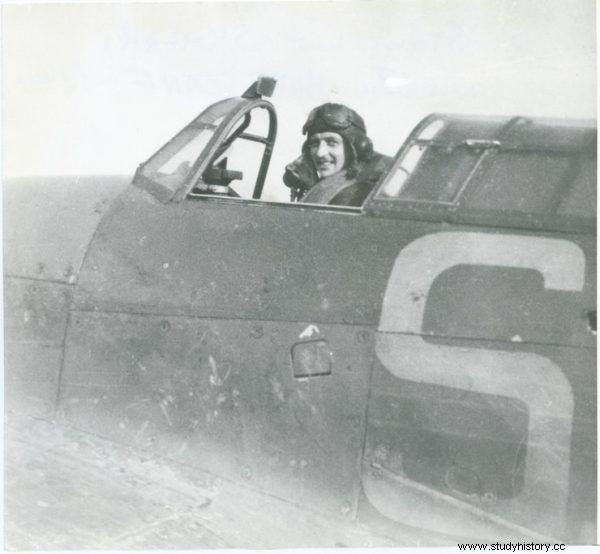
Stanisław Skalski in the cabin of the Hurricane plane, 1940. Picture from the book “As. Memories of the legendary 303 Squadron commander ”(Znak Horyzont 2016).
In the Battle of Britain he added another 4 and 2/3 victories, and then another in Polish squadrons and as a volunteer in North Africa in the Polish Fighting Team, also known as Skalski's Circus. After the African adventure and commanding the British squadron, he returned to Great Britain, where he took command of the fighter's wings, grouping several squadrons.
At that time, he was flying a P-51 Mustang with the markings "SS" - his initials. And on this machine, he had the last two victories, in addition ... not firing a single bullet. On August 2, 1944, he positioned himself to attack a pair of German Messerschmitts, when one of the Germans realized the danger and tried to move the Pole out of his sight with a violent maneuver. Then he ran into his friend.
Skalski ended the war having shot down 18 and 11/12 enemy machines and numerous skills that the Americans wanted to use. "I have no citizenship," our aviator exclaimed. "Say yes, and you will be an American citizen tomorrow," they tempted. However, Skalski did not take advantage of it and returned to Poland. He joined the People's Air Force, but less than a year after his return, he was arrested on suspicion of espionage.
After a brutal investigation into torture, he was sentenced to death. The verdict was finally changed, but no one told the aviator about it for a long time. Ultimately, the authorities freed and then rehabilitated the Polish ace, and in 1988 they were even promoted to the rank of general. He died in 2004
Lieutenant Colonel Witold Urbanowicz
When the war broke out, he was 31 years old and had one air victory on his account - in the summer of 1936, while patrolling the border, he tried to chase away a Soviet reconnaissance plane that invaded Polish space and photographed the fortifications under construction. When the Russians started shooting, Urbanowicz responded with fire and shot down the aerial spy. Then he was a flight instructor, nicknamed "Cobra" or "Le Kuto" (from the French Le Couteau - knife).
In 1939, he unsuccessfully tried to defend the base on outdated fighters. In the end, as ordered, he evacuated his charges to Romania, but he himself returned to fight and was immediately taken into Soviet captivity. Luckily he managed to get away from it. In the West, he first flew in British squadrons, and then joined the 303rd Squadron, where he took the position of commander.
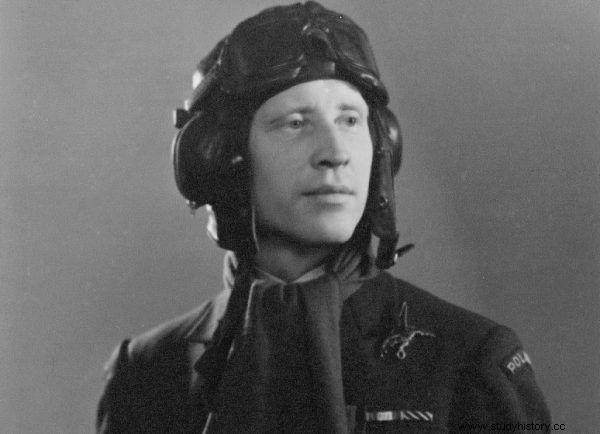
Witold Urbanowicz's craftsmanship is best evidenced by the fact that his plane was never hit by an enemy (source:Witold Urbanowicz's family archive; press materials).
In the Battle of Britain, he shot down 15 enemy aircraft - four on September 27 and 30. With such a result, he was among the top Allied aces of the Battle of Britain. After its completion, he was delegated to staff and diplomatic functions overseas.
When he got bored of "piloting the desk" he volunteered for the American unit fighting in China. There, he added 2 to his victories over Japanese planes, although he himself claimed that not all the Japanese knocked down were included in him.
In the end, the war ended with 17 victories and - interestingly - the planes he piloted were never hit by an enemy missile. After the war, he remained in exile in the United States, and his short stay in Poland in 1947 ended with his escape from the Security Office. In 1995 he was promoted to general, he died a year later.
Captain Eugeniusz Horbaczewski
He started the war in 1941 at the age of 24. He fought in the West and North Africa, where he knocked down 5 enemy machines. He became famous after the invasion of Normandy as the commander of the 315th Dęblinski Squadron, when one of his pilots forcibly landed in France and got stuck in a marshy area. Horbaczewski landed at a nearby American landing field, borrowed a Jeep, brought a friend and put it in the cabin of his plane. Sam sat on his lap, took off, and so they flew to base.
On August 18, 1944, he should not have been at the controls because he had a cold and a fever. The latter, however, was beaten with pills and took off at the head of his squadron. During the patrol, the Poles encountered about 60 low-flying Focke-Wulfs and attacked the Germans.
It was a slaughter - as many as 16 of them were shot down, and Horbaczewski himself shot down 3 in front of his subordinates. Unfortunately, he was also the only loss of the Polish squadron. His colleagues deluded that he might have landed somewhere forcibly and was in captivity. Everything became clear three years after the war, when the Mustang's wreckage with its body was unearthed. During the war, he certainly shot down 16 1/2 planes. Plus 3 more V-1 flying bombs.
Captain Bolesław Gładych
He had already fought in France, but his successes - 7 kills - brought him only in the 303 and 302 Squadrons. In 1944 he was persuaded by an American airman of Polish origin, Fracis Gabreski, and joined the American formations. His new unit flew heavy P-47 Thunderbolt fighters and Gladych was still successful with them - 10 airplanes and 4 on the ground.
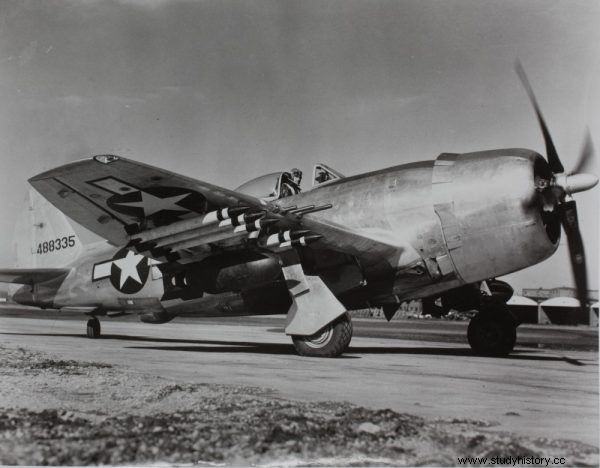
Republic P-47 Thunderbol. Bolesław Gładych had his greatest successes at the controls of such a fighter (source:San Diego Air &Space Museum Archives; lic. Public domain).
On March 8, 1944, he shot down a German fighter, and then, returning alone to the base in his damaged plane, he flew over the German airport, where he massacred three more enemy machines standing on the ground. The Americans appreciated his fighting spirit and awarded him a Silver Star, and his feat was commemorated by the US President. No wonder his American colleagues called him "Mad Pole" (Mad Pole) and "Mike Killer" (Mike the Killer).
Various rumors were circulating about Gładych - among others that while serving in the Polish squadron, he almost shot down the plane on which Prime Minister Winston Churchill was flying, or that he damaged the Spitfire by taking a sky ride with his fiancée on his lap. The real story, however, is that with some of his attack on the Messerschmitt, the German airman got so scared of Gladych that, without even waiting for the first Thunderbolt shots, he jumped out of his parachute machine. Interestingly, the Americans scored more victories for him (17) than the Poles (14).
Gladych called most of his planes "Pengie" (Penguin) and decorated them with a drawing of a penguin - it was the nickname of his fiancée, later wife. After the war, he moved to the United States with her and died in 2011.
Major Jan Zumbach
He had dual citizenship - Polish and Swiss, and had the German pronunciation of his surname. At the outbreak of the war, he was returning to form in a sanatorium in Zaleszczyki, after breaking his leg during military maneuvers, when he caught the landing gear of the plane on the roof of the car during landing.
In September 1939, he flew on unarmed liaison machines. Weapons and successes appeared a year later in Great Britain in the 303rd Squadron. During the Battle of Britain he shot down 7 enemy machines, and then another 5 and 1/3 - 12 and 1/3 in total. Despite the fact that his plane was hit many times, he was lucky. Perhaps Donald Duck brought them - he was called Donald himself by his friends and he had such a character painted on his fighters.
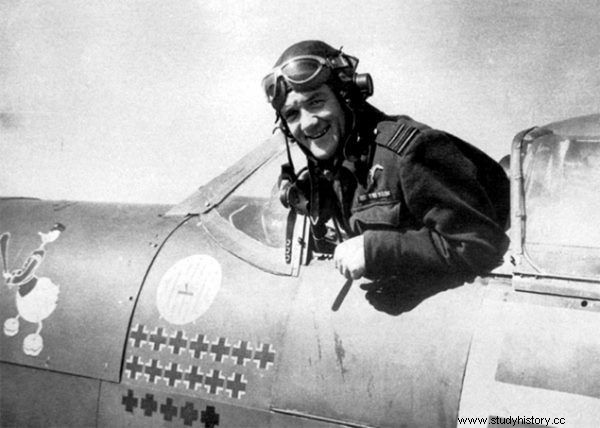
Jan Zumbach in his machine with the inseparable Donald Duck (source:public domain).
Depending on the art skills of his mechanics, the drawing was more or less similar to the creation of Walt Disney. Perhaps this Kaczor was missing on the liaison machine which flew on April 7, 1945. Zumbach got lost and when the fuel ran out, he landed. Unfortunately, because on the German side. Fortunately, the war was over and the captivity was short-lived.
After 1945, he had various professions - he smuggled watches from Switzerland to Great Britain, gold to Palestine, and cigarettes to Italy. The deal ended when his partners robbed him. Later, he ran a disco in Paris, served as a mercenary in the wars in Katanga and Biafra, and finally returned to the French gastronomy and entertainment industry. He died in unknown circumstances in 1986.
Major Marian Pisarek
Already on the first day of the war, he and another pilot shot down a German plane whose crew was taken prisoner by Skalski. The second one was knocked down by two German machines, and the third by unlucky and by mistake ... by Polish Karaś, two of whose crew members died of wounds. During the Battle of Britain he shot down 4 German planes.
Unfortunately, when his Hurricane was lit and he jumped, the unmanned machine crashed to the ground, killing three British civilians. Later, for most of 1941, he commanded the 308th Krakow Squadron - he himself shot down 5 1/2 enemy planes in his colors, and the Krakowiacy, as a squadron under his command, achieved the highest number of victories in the entire RAF for that year.
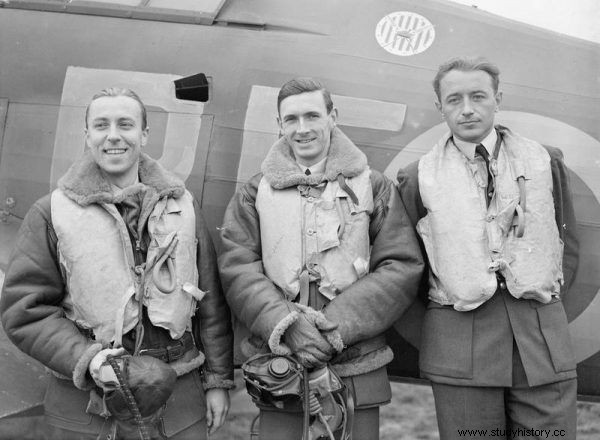
Lieutenant pilot Zdzisław Henneberg, lieutenant pilot John A. Kent and lieutenant pilot Marian Pisarek in front of the Hurricane fighter (source:public domain).
He died in April 1942, when the Polish formation was attacked by the Germans at the seaside. The plane fell into the water and the writer's body was never found. Until that day, he shot down 12 enemy machines, he was posthumously awarded the Gold Cross of the Virtuti Militari War Order for the 1939 War.
Major Stefan Janus
He started his combat career in the 308th Krakow Squadron, quickly showing himself as a capable fighter and even more capable commander. He commanded Polish squadrons in the operation over Dieppe in 1942, and by January 1943 he had knocked down a total of 6 enemy aircraft. It seemed that Lopek - because that was his nickname - was lucky, the more so as his wife Jadwiga managed to get from the occupied country to Great Britain.
It turned out, however, not entirely. On January 26, 1943, while returning to base, he collided with another plane over the English Channel. Janus managed to jump out, he was fished by French fishermen who were then forced by the Germans to hand over the flyer.
He went to Stalag Luft 3 in Sagan (Żagań), where he commanded the Polish part of the preparations for the Great Escape, which took place on the night of March 24-25, 1944. Janus probably did not have time to enter the pit and was lucky - 50 out of 73 caught airmen The Germans murdered it.
After the war, Janus remained in Great Britain, where he worked at the RAF. It was said that he was trained by the CIA because the Americans were eager to get a working copy of the MiG-15 fighter, which was causing them so many problems in the war in Korea. Supposedly, it was supposed to be parachuted in Poland, to get to a military airport, steal a jet and fly to one of the NATO bases. Ultimately, the Americans received the MiG in a different way, and the operation was canceled. Janus died in 1978
